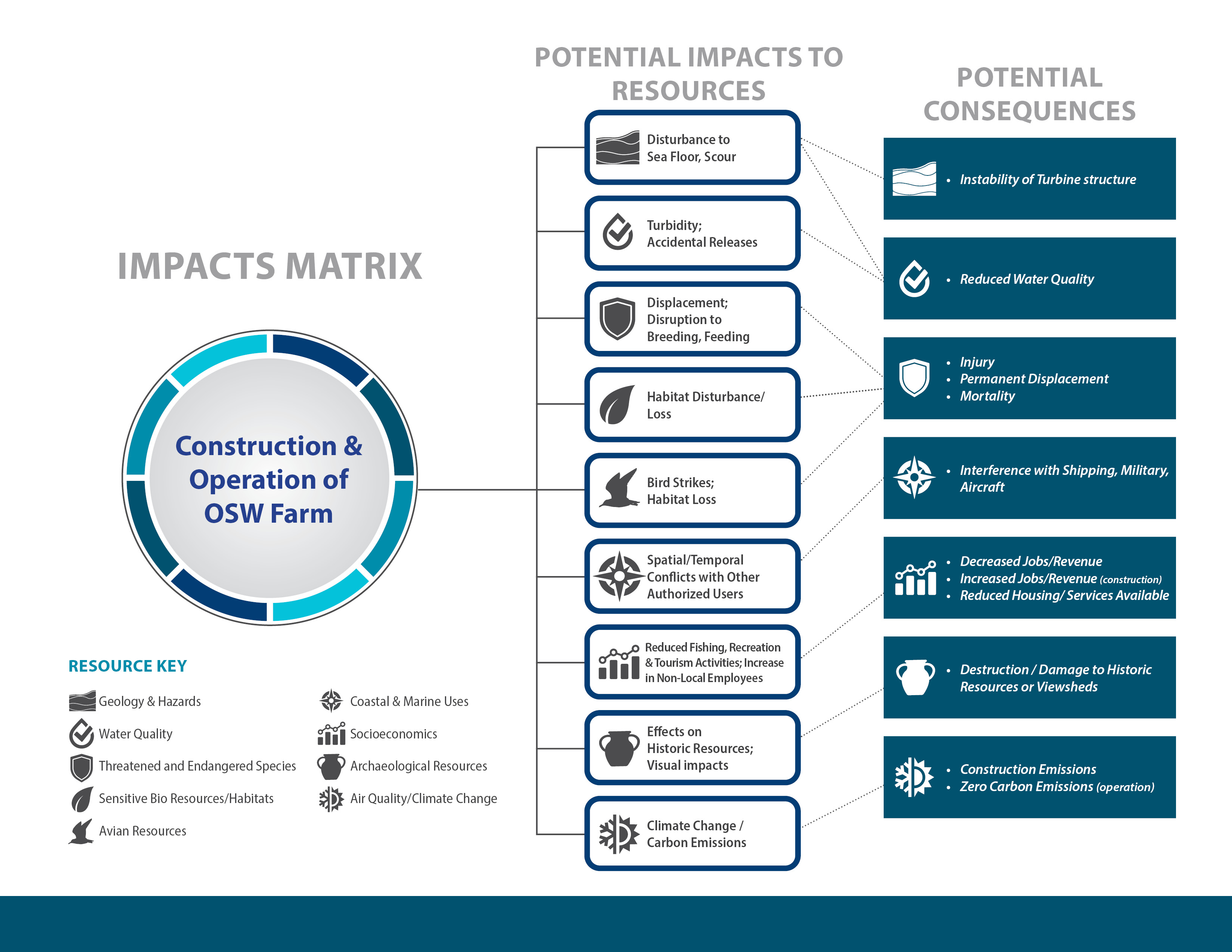
One of the primary steps in the regulatory approval process for construction and operation of an offshore wind farm is preparation of an Environmental Impact Statement (EIS), as required by the National Environmental Policy Act (NEPA). The Bureau of Ocean Energy Management (BOEM) is the lead federal agency for the EIS and is supported by a number of cooperating and coordinating agencies.
The EIS evaluates potential impacts of construction and operation (including maintenance and decommissioning) of the offshore wind farm to natural, physical, historic, and socioeconomic resources. This series provides a snapshot summary of the potential impacts and potential consequences evaluated in an offshore wind EIS.
Part 1:
Geology and Hazards. Placement of the fixed-bottom foundations can cause disturbance to the sea floor (particularly monopile foundations that are pile-driven into the seabed). Scour around the foundations could increase the instability around the turbine structure; however, this can be mitigated with use of appropriate scour protection.
Water Quality. Turbidity (e.g., from erosion and scour), discharges, and inadvertent spills / accidental releases can potentially decrease onshore surface water quality and/or offshore water quality. These impacts generally range from negligible to moderate.
Air Quality / Climate Change. Construction/installation and operations and maintenance emissions can decrease air quality, but impacts would be temporary in nature. Long-term effects to climate change would be beneficial as offshore wind provides energy from a renewable resource and operation of the wind turbines would not generate emissions.
We can help you navigate these impacts. Fill out the form below and Kim Fitzgibbons will contact you promptly!
Part 2:
Threatened and Endangered Species. Protected species (including marine mammals, sea turtles) could be displaced or experience behavior modifications from construction-related activities, including noise (underwater and airborne), and vessel traffic. The operation of a wind farm could have minor indirect impacts on predator-prey relationships, both adverse and beneficial (artificial reef effect). Consultation with National Marine Fisheries Service and/or US Fish and Wildlife Service may be necessary.
Sensitive Biological Resources/Habitats. Similar to the potential impacts to Protected Species, potential impacts to sensitive habitats could occur from construction and/or operation (temporary or permanent physical alteration/disturbance/loss of habitat). Consultation with National Marine Fisheries Service may be necessary if Essential Fish Habitat (EFH) is impacted.
Avian Resources. Potential impacts to birds and bats from construction include displacement and avoidance behavior due to habitat alteration/loss, noise, and vessel traffic. Potential impacts during operation of the wind farm include individual mortality from collision with the operating Wind Turbine Generators (WTGs). Mitigation measures such as painting techniques are being developed/tested to reduce the impacts to birds and bats.

